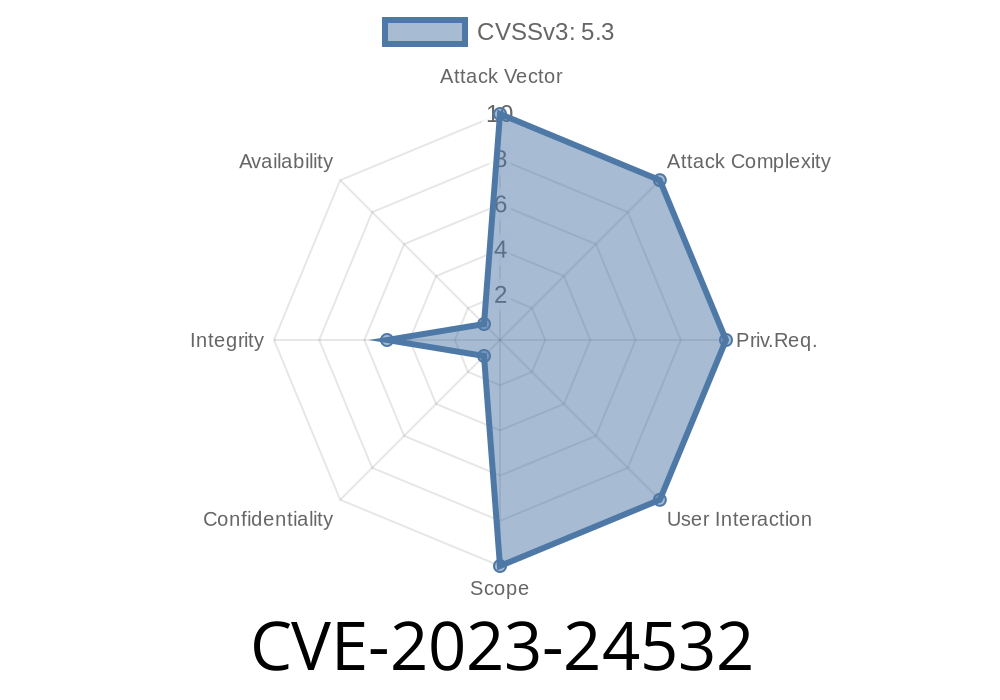A recently identified vulnerability, CVE-2023-24532, could pose a potential security risk to developers who use the Go cryptography library crypto/elliptic. This issue affects the ScalarMult and ScalarBaseMult methods of the P256 Curve, as their implementations may return incorrect results due to certain inputs known as "unreduced scalars."
An unreduced scalar is a scalar that is larger than the order of the curve. Due to flaws in the way the P256 Curve's ScalarMult and ScalarBaseMult methods handle these unusual inputs, it is possible to create vulnerabilities in cryptographic applications that use the affected methods.
It's worth noting, however, that popular cryptographic operations such as crypto/ecdsa and crypto/ecdh are not impacted by this vulnerability. This is because these widely-used crypto operations consistently use properly reduced scalars for their computations.
Code Snippet: Demonstrating the Issue
Here's a code snippet to help you understand the issue better, using the Go crypto/elliptic library:
package main
import (
"crypto/elliptic"
"fmt"
)
func main() {
curve := elliptic.P256()
reducedScalar := []byte{1, , , , , , , , , , , , , , , , , , , , , , , , , , , , , , , }
unreducedScalar := []byte{1, , , , , 235, 255, 255, 255, 255, 255, 255, 255, 255, 255, 255, 255, 255, 255, 255, 255, 255, 255, 255, 255, 255, 255, 255, 255, 255, 255, 255}
_, y1 := curve.ScalarBaseMult(reducedScalar)
_, y2 := curve.ScalarMult(curve.Params().Gx, curve.Params().Gy, unreducedScalar)
// y1 should be equal to y2
fmt.Printf("y1: %x\ny2: %x\n", y1, y2)
fmt.Printf("Are y1 and y2 equal? %v\n", y1.Cmp(y2) == )
}
This example demonstrates that the ScalarBaseMult and ScalarMult methods return different results when passed an unreduced scalar. Thus, it is crucial that developers using these methods ensure they always use properly reduced scalars to avoid potential vulnerabilities in their applications.
Exploit Details and Preventative Measures
Although this vulnerability (CVE-2023-24532) does not directly impact the well-established crypto/ecdsa and crypto/ecdh libraries, it can still be exploited in other applications that directly use the crypto/elliptic package. Developers who rely on this package should take necessary precautions to avoid being exposed to potential security risks.
A potential measure that developers can take to mitigate the risk of this vulnerability is to always ensure that scalar inputs adhere to proper reductions of sub-group order. It is also recommended to stay up-to-date on any security patches for the crypto/elliptic package.
Original References
For additional information on this vulnerability, you can refer to the original CVE entry CVE-2023-24532.
In conclusion, developers are urged to diligently ensure inputs to the P256 Curve ScalarMult and ScalarBaseMult methods satisfy necessary reductions and to stay informed on potential security updates related to this vulnerability. By doing so, developers can help protect their applications from potential malicious actors exploiting the CVE-2023-24532 vulnerability.
Timeline
Published on: 03/08/2023 20:15:00 UTC
Last modified on: 03/15/2023 17:59:00 UTC
